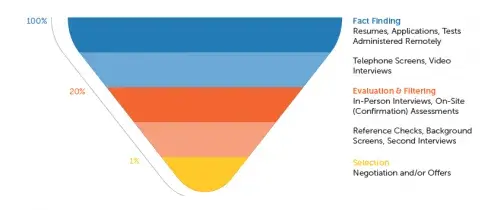Every week I speak to a lot of hiring managers and recruiters and repeatedly hear their frustrations at not finding enough qualified applicants. Similar sentiments were echoed in Elena Holodny's Business Insider article The US economy is turning into a nightmare for recruiters. Finding quality employees is always at the top of the to-do list for those in HR, and while receiving a ton of applications may seem like a good thing in the hiring process, sometimes the “more-the-merrier” doesn’t quite apply when so few of the applicants are qualified.
With more and more businesses moving to online applications as the primary, if not the only method to apply, job applicants can sit at home and apply to dozens or more jobs in an hour. Job board aggregators like Indeed and ZipRecruiter push the job postings out to multiple websites, making them visible to millions of candidates from a single platform. While this convenience certainly makes the application process more efficient, it can also dilute the overall quality of the candidate pool. Invariably, you will receive applications from people who don't possess ANY of the minimum job requirements.
Online job applications also mean that the individual candidate may not be as invested in the application process - research indicates that applicants spend less than 2 minutes reading each job description, so it’s no surprise that employers are reporting a lack of qualified applicants. Lack of investment also diminishes the chances that a candidate will show up for interviews or complete other steps of the application process. All of this leads to a lot of wasted time and frustration that falls squarely on HR's shoulders.


One of the biggest trends in pre-employment testing, and a key factor behind the growth in this space, is that employers are now increasingly using pre-employment tests early in the hiring process as a means of finding out whether or not a candidate meets the basic qualifications for the job. By assessing an applicant’s critical thinking ability or basic work readiness skills, for example, an employer can quickly filter through large applicant pools to focus their energy on the most qualified applicants who are most likely to succeed. The data gathered from pre-employment tests can help recruiters and hiring managers have more meaningful and productive conversations with their applicants. Furthermore, applicants become more invested in the process when they take 20 or 30 minutes to complete a pre-employment test, which increases the chances that they’ll show up for interviews or follow through on other steps in the hiring process. Most importantly, pre-employment tests help you find the needle in the haystack within your large applicant pool, making it easier to find the best talent to join your team.





